What Kind of Plastic Are Car Fuel Tanks Made Of?
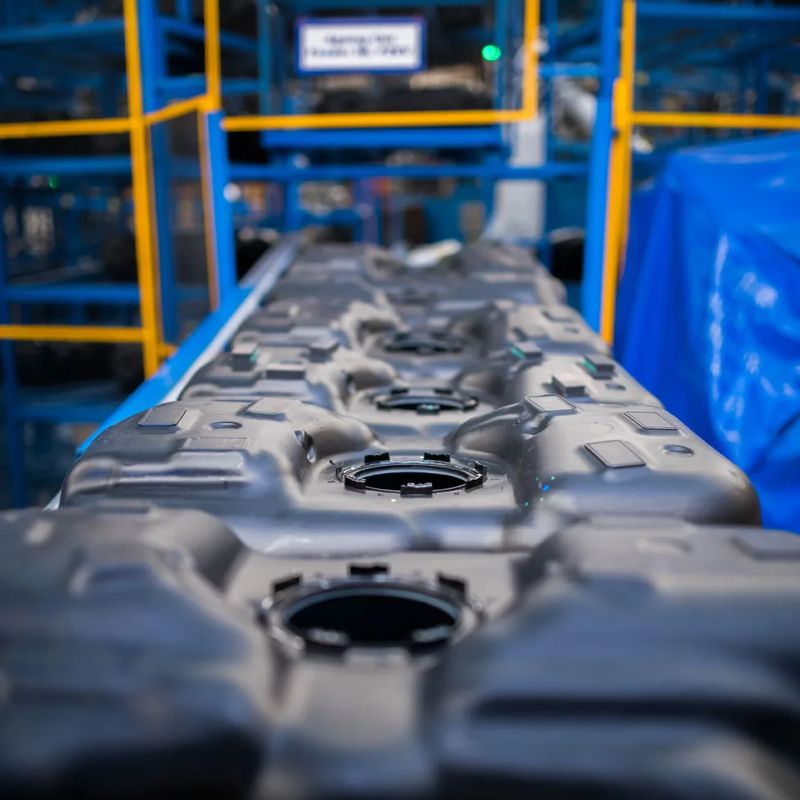
Did you know that the plastic in your automotive fuel tanks is tough enough to hold gasoline without breaking a sweat? It's not just any plastic—it's a specially engineered material designed to keep you safe and your car running smoothly. And over 90% of modern cars use plastic fuel tanks.
We're excited to take you on a journey through the world of plastic automotive fuel tanks! In this article, we'll explore the kinds of plastics used to make them, discover why fuel tank suppliers prioritize plastic over metal, and how they're manufactured.
We'll also dive into the welding techniques that keep them sealed tight, plus the safety and environmental factors that matter to all of us. Curious about what's next for fuel tank materials? We've got that covered too, with a look at future trends.

Table of Contents
Types of Plastic Used in Fuel Tanks for Cars
Why Are Plastic Automotive Fuel Tanks Preferred Over Metal?
How Are Car Plastic Gas Tanks Manufactured?
Plastic Welding for Car Gas Tanks: Techniques and Applications
Safety and Environmental Considerations for Car Fuel Tanks
Future Trends in Car Fuel Tank Materials
FAQs
Final Thoughts
Types of Plastic Used in Fuel Tanks for Cars
When we think about car fuel tanks, we might picture a simple container, but there's a lot more going on beneath the surface. The plastics used in these tanks are specially designed to keep fuel safe, secure, and contained under all kinds of conditions.
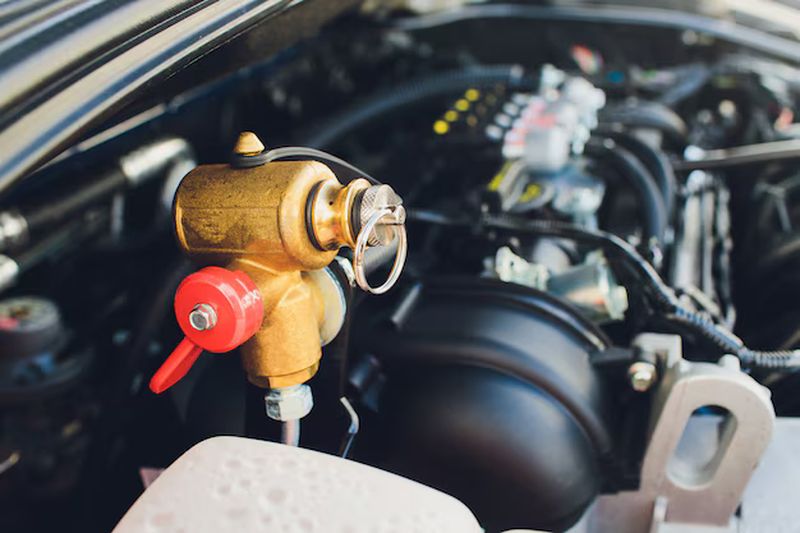
High-Density Polyethylene (HDPE)
First up, we have High-Density Polyethylene or HDPE. This plastic is a superstar in the world of fuel tanks, and it's easy to see why. HDPE is incredibly durable, thanks to its tightly packed molecular structure. Unlike polypropylene, HDPEʼs crystallinity prevents fuel swelling.
What sets HDPE apart is its resistance to chemicals. As per ASTM D3350, HDPE meets critical chemical resistance benchmarks. Gasoline can be tough on materials, but HDPE doesn't flinch.
Plus, it's lightweight—a huge bonus for automotive fuel tank manufacturers looking to improve fuel efficiency. After all, a lighter car means less work for the engine!
Cost is another big win for HDPE. It's affordable to produce, which helps keep car prices reasonable for us as buyers. And here's a cool bonus: HDPE is recyclable. So, when a fuel tank reaches the end of its life, it can be turned into something new instead of just piling up in a landfill.
Multi-Layer Plastics
Next, let's talk about Multi-Layer Plastics. These are a bit more high-tech, and we love how they team up different materials for a stronger, smarter fuel tank.
Typically, multi-layer plastics start with a base of HDPE, but then they add other players like Ethylene Vinyl Alcohol (EVOH). EVOH reduces permeation by 99%.
Safety is another perk of multi-layer designs. Each layer acts like a backup, so if one gets damaged, the others step up to prevent leaks. This makes multi-layer tanks extra reliable, especially in a crash.
What's neat is how customizable these plastics are. Fuel tank suppliers can tweak the layers to fit a specific car's needs—maybe adding strength here or flexibility there. Because of this, multi-layer plastics are a step up from single-layer options, offering enhanced performance where it counts.
Polypropylene (PP) and Nylon Blends
Finally, we've got Polypropylene (PP) and Nylon Blends, a dynamic duo that's perfect for certain fuel tank jobs. These blends mix two powerhouse plastics to create something tough, flexible, and ready for action.
Polypropylene, or PP, is lightweight and handles heat like a pro, which is key when a fuel tank sits near a hot engine. Nylon, meanwhile, brings serious strength and durability to the mix.
Together, they form a blend that can take a hit without breaking. That flexibility is a lifesaver in accidents—rather than cracking, the tank bends and bounces back.
Chemical resistance is another strength here. Gasoline won't wear down PP and Nylon blends, so they stay solid over time. And because they're lightweight, they help slim down the car's overall weight.
Less weight means better fuel economy, which is something we can all appreciate at the pump!
These blends aren't as common as HDPE or multi-layer plastics, but they shine in specific cases where extra flexibility or heat resistance is needed. For example, some high-performance cars or trucks might use PP and Nylon blends to meet tougher design specs.
Why Are Plastic Automotive Fuel Tanks Preferred Over Metal?
When it comes to fuel tanks, plastic has taken the lead over metal, and for good reason. We're not just talking about a trend—there are solid benefits that make plastic the go-to choice for carmakers today. From saving weight to resisting rust, plastic tanks bring a lot to the table.
Weight Savings
First things first, plastic fuel tanks are lighter than their metal counterparts. That might sound simple, but it's a game-changer. A lighter fuel tank means a lighter car overall, and that's music to any driver's ears. Why? Because a lighter car uses less fuel to get from point A to point B.
For automotive fuel tank manufacturers, this weight savings is a big deal. It helps them meet strict fuel efficiency standards set by governments around the world. Plus, lighter cars produce fewer emissions, which is great for the environment. In fact, According to the EPA, plastic tanks reduce weight by 30% vs. steel.
But it's not just about the planet—drivers benefit too. Less weight means better handling and a smoother drive. So, whether you're cruising down the highway or navigating city streets, a plastic fuel tank helps your car perform at its best.
Corrosion Resistance
Next up, let's talk about corrosion resistance. Metal fuel tanks, especially those made of steel, have a pesky problem: they can rust. Over time, exposure to moisture and chemicals can cause the metal to corrode, weakening the tank and potentially leading to leaks.
Plastic fuel tanks, on the other hand, don't rust. They're immune to corrosion, which means they stay strong and reliable for years. This durability is a huge plus, especially in areas with harsh weather or salty roads. Plastic tanks can handle it all without breaking a sweat.
Design Flexibility
Now, let's get into design flexibility. Plastic is like a sculptor's dream—it can be molded into almost any shape imaginable. That's a huge advantage when it comes to fitting a fuel tank into a car.
Cars today are designed with sleek, compact layouts, and every inch of space matters. Plastic tanks can be shaped to fit into tight spots or wrap around other components, making the most of the available room.
Metal tanks? Not so much. They're typically boxy and rigid, which limits where they can go. That means car designers have to work around the tank's shape, sometimes sacrificing space or efficiency.
But with plastic, the tank can be custom-designed to fit perfectly, like a puzzle piece in the car's layout.
In short, plastic automotive fuel tanks give carmakers the freedom to think outside the box—literally. That leads to better, more efficient vehicle designs, and ultimately, a better driving experience for us.
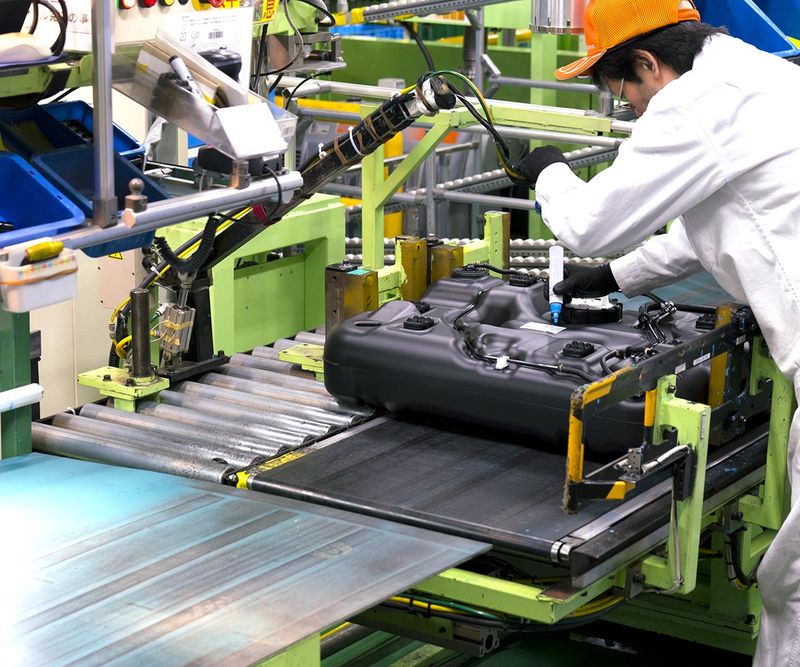
Cost-Effectiveness
Last but not least, let's talk about cost-effectiveness. Plastic fuel tanks are generally cheaper to produce than metal ones, and that savings trickles down to us as consumers. But it's not just about the upfront cost—plastic tanks offer long-term financial benefits too.
For starters, the manufacturing process for plastic automotive fuel tanks is simpler and less labor-intensive. Blow molding, the main technique used, is efficient and scalable, which keeps production costs low. Metal tanks, on the other hand, require stamping, welding, and often additional coatings to prevent rust, all of which add to the price tag.
Even better, plastic automotive fuel tanks can be made with recycled materials, and they're recyclable themselves. That's a win for the environment and can sometimes lead to cost savings in the production process. It's a smart choice all around.
In the end, plastic automotive fuel tanks offer a balance of affordability, durability, and efficiency that metal just can't match. That's why they've become the industry standard—and why we're big fans.
How Are Car Plastic Gas Tanks Manufactured?
Ever wondered how plastic fuel tanks for cars are made? It's a fascinating process that blends science, engineering, and a little bit of magic to create a safe and reliable container for your fuel.
Blow Molding: Shaping the Tank
First up is blow molding—the heart of the manufacturing process. Here's how it happens:
The process starts with a tube of molten plastic called a parison(molten plastic tube). This parison is made from high-density polyethylene (HDPE).
The parison is then placed inside a mold that's shaped like the fuel tank.
Next, air is blown into the parison, inflating it like a balloon until it fills the mold and takes on the tank's exact shape.
Once the plastic cools and hardens, the mold opens, and out pops a brand-new fuel tank!
Coextrusion: Layering for Strength
Now, let's talk about coextrusion, a high-tech twist that makes fuel tanks even better. By layering multiple types of plastic, automotive fuel tank manufacturers can create a tank that's stronger, safer, and better at keeping fuel vapors locked inside.
Here's how it works:
Instead of using a single layer of HDPE, the parison is made with several layers of different plastics. For example:
The inner layer might be HDPE for its strength and chemical resistance.
A middle layer could be ethylene vinyl alcohol (EVOH), which is fantastic at stopping fuel vapors from escaping.
The outer layer is another coat of HDPE to protect the tank from bumps and scrapes.
Post-Processing: Finishing Touches
After the tank is molded, it's not quite ready for the road just yet. That's where post-processing comes in—the finishing touches that turn a molded piece of plastic into a fully functional fuel tank.
Here's what happens:
Trimming: First, any excess plastic, called flash, is carefully trimmed off to give the tank a clean, smooth finish.
Adding Fittings: Next, important components like the fuel pump, sender unit (which tells you how much gas is left), and vent valves are installed. These fittings are crucial for the tank to work properly in your car.
Testing: Finally, the tank goes through rigorous testing to ensure it's airtight and safe. This might include:
- Pressurizing the tank to check for leaks.
- Impact tests to make sure it can handle a crash.
- Only tanks that pass with flying colors are approved for use.
Plastic Welding for Car Gas Tanks: Techniques and Applications
When it comes to keeping plastic fuel tanks for cars in tip-top shape, plastic welding is a game-changer. It's like the superhero of repairs, swooping in to fix leaks, cracks, and other issues that could sideline your ride. All welds meet ISO 13953 leak-test criteria.
Hot Gas Welding: The Hairdryer Hero
First up is Hot Gas Welding. Hot Gas Welding uses a stream of hot air (or gas) to soften the plastic, making it pliable enough to fuse together.
Here's how it happens:
- A special tool, called a welding gun, blows hot air onto the area that needs repair.
- The heat softens the plastic, and a filler rod (also made of plastic) is melted into the gap or crack.
- As the plastic cools, it hardens, creating a strong, seamless bond.
Hot Plate Welding: The Speedy Sound Wave
Next, we have Hot Plate Welding! This technique uses high-frequency sound waves to create friction between two pieces of plastic. That friction generates heat, melting the plastic and fusing it.
Here's the process:
- Two plastic parts are held together under pressure.
- A device called a sonotrode sends ultrasonic vibrations through the plastic.
- The vibrations cause the plastic to heat up and melt at the contact points.
- Once the vibrations stop, the plastic cools and forms a strong bond.
Pro Tip: Hot plate welding is ideal for high-volume repairs.
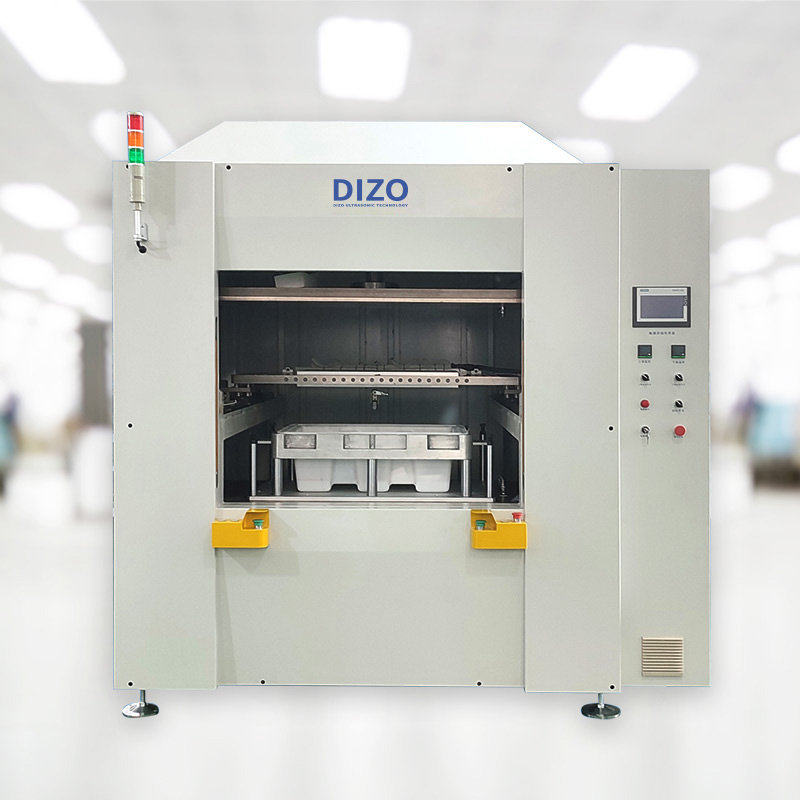
Extrusion Welding: The Hot Glue Gun of Plastics
Last but not least, let's talk about Extrusion Welding. If you've ever used a hot glue gun, you'll get this one right away. Extrusion Welding involves melting a plastic rod and using it to fill gaps or join two pieces together.
Here's how it works:
- A handheld extruder melts a plastic rod and pushes it out as a hot, gooey stream.
- The welder guides this stream into the crack or along the seam that needs to be joined.
- As the melted plastic cools, it hardens and creates a solid, durable bond.
Welding Technique |
Principle |
Best Suited For |
Common Applications |
|---|---|---|---|
Hot Gas Welding |
Use hot air to soften plastic and melt a filler rod into cracks or seams |
Repairs and small-scale production |
Plastic pipe repairs, water tanks, plastic sheet joining |
Ultrasonic Welding |
Apply high-frequency vibrations to generate friction and melt plastic at contact points |
Mass production and automation |
Electronics assembly, automotive plastic parts, medical devices |
Extrusion Welding |
Melt a plastic rod and extrude it into joints or gaps like a hot glue gun |
Thick plastic repairs and manufacturing |
Large storage tanks, plastic containers, industrial plastic structures |
Safety and Environmental Considerations for Car Fuel Tanks
When it comes to plastic automotive fuel tanks, safety and the environment are top priorities. FMVSS 301 mandates crash-resistant fuel tanks.
Flammability: Why Plastic Tanks Are Safe
You might wonder, "Isn't plastic flammable? How can a plastic automotive fuel tank be safe?" It's a great question! While plastic can burn, fuel tanks are made from special plastics like High-Density Polyethylene (HDPE) that are designed to resist fire.
These tanks go through rigorous testing to ensure they can handle extreme conditions, like crashes or high temperatures.
Here's how they stay safe:
- Fire-resistant additives: Many plastic tanks include additives that make them less likely to catch fire.
- Thick walls: The tanks are built with thick, durable walls that can withstand impacts without rupturing.
Recycling: Turning Old Tanks into New Treasures
Recycling plastic automotive fuel tanks is a bit tricky, but it's getting better every day. The challenge comes from the fact that many tanks are made of multi-layer plastics, which are tough to separate.
Here's what's being done:
- Advanced recycling techniques: Companies are developing new ways to break down multi-layer plastics so they can be reused.
- Single-layer tanks: Some manufacturers are switching to single-layer HDPE tanks, which are easier to recycle.
- Upcycling: Old tanks can be turned into new products, like plastic lumber or playground equipment.
Regulations: Keeping Fuel Tanks in Check
Fuel tanks have to follow strict rules to keep us safe and protect the environment. These regulations cover everything from how much fuel vapor can escape to how well the tank holds up in a crash. Here are the key players:
- Emission standards: Rules like the SHED test ensure that fuel vapors don't leak into the air, helping to reduce pollution.
- Crash safety: Tanks must pass impact tests to make sure they don't rupture in an accident.
- Material requirements: Only certain plastics, like HDPE, are approved for use in fuel tanks because they meet safety and durability standards.
Future Trends in Car Fuel Tank Materials
As we zoom into the future, the world of plastic fuel tanks for cars is evolving faster than ever. New materials and designs are being developed to make fuel tanks even safer, more efficient, and better for the environment.
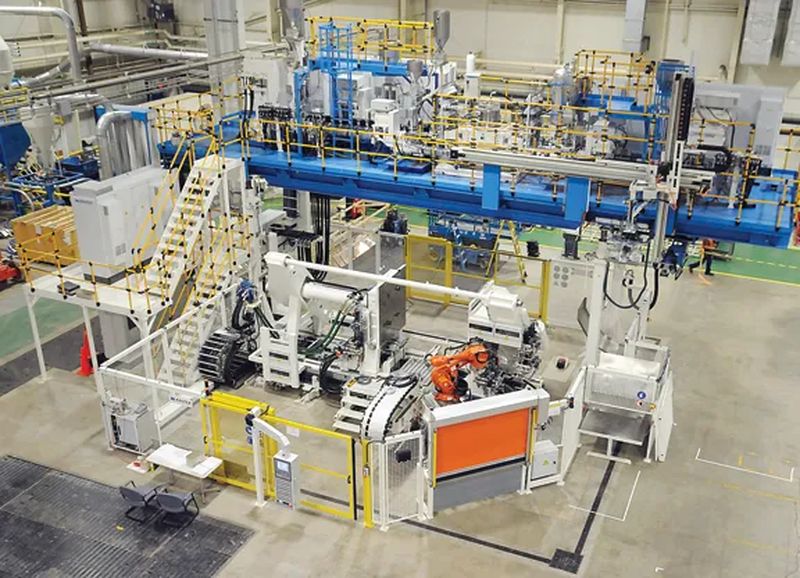
Bio-Based Plastics: Eco-Friendly Heroes
Imagine a fuel tank made from plants instead of petroleum. Sounds futuristic, right? Well, it's already happening with Bio-Based Plastics! These plastics are crafted from renewable resources like corn, sugarcane, or even algae, making them a greener alternative to traditional plastics.
Here's why they're awesome:
- Lower carbon footprint: Since they're made from plants, bio-based plastics can reduce greenhouse gas emissions compared to fossil-fuel-based plastics.
- Same strength, new source: Bio-based versions of High-Density Polyethylene (HDPE) offer the same durability and chemical resistance we rely on but with a smaller environmental impact.
- Renewable and sustainable: As long as we can grow more plants, we can keep making these plastics.
Hybrid Designs: Teamwork Makes the Dream Work
Hybrid Designs are all about combining the best of different materials and technologies to create fuel tanks that are stronger, lighter, and smarter.
Here are some exciting hybrid approaches:
- Composite materials: By mixing plastics with fibers like carbon or glass, engineers can create tanks that are incredibly strong yet lightweight.
- Smart tanks: Some hybrid designs integrate sensors or smart materials that can detect leaks, monitor fuel levels, or even self-heal small cracks.
- Multi-material tanks: Combining plastics with metals or other materials can enhance durability and safety, especially in extreme conditions.
Improved Permeation Barriers: Invisible Shields
Permeation might sound like a fancy word, but it's a big deal for fuel tanks. It refers to how much fuel vapor can sneak through the tank's walls and escape into the air. Even tiny amounts of vapor can add up to pollution over time, so reducing permeation is crucial.
Here's how they work:
- Advanced materials: New plastics and coatings, like Ethylene Vinyl Alcohol (EVOH), are being used to create stronger barriers against fuel vapors.
- Nanotechnology: Some tanks now use nano-sized particles to block vapors more effectively. It's like adding an extra layer of protection.
- Multi-layer magic: By stacking multiple layers of different materials, each with its superpower, fuel tank suppliers can create tanks that are nearly impermeable.
FAQs
Do you have questions about the plastics used in plastic automotive fuel tanks? We've got answers!
Can LDPE hold gasoline?
LDPE isn't the greatest at holding gasoline. It's more permeable, meaning gasoline vapors can leak through it over time. Plus, the chemicals in gasoline might weaken it.
Is LDPE gas permeable?
Yep, LDPE is gas permeable. That means gases, like the vapors from gasoline, can pass through it more easily than through HDPE.
Will gasoline dissolve HDPE?
Nope! HDPE is super tough and resistant to chemicals like gasoline. It won't dissolve or break down, even if gasoline sits in it for a long time.
Can you put gasoline in a polyethylene tank?
Yes, but it has to be the right kind of polyethylene! HDPE is the type usually used for fuel tanks because it's strong and doesn't let gasoline seep through or damage it.
What is the difference between LDPE and HDPE?
LDPE and HDPE are like cousins with different personalities:
- LDPE: Soft, flexible, and bendy. It's great for lightweight stuff but not super strong.
- HDPE: Hard, sturdy, and tough. It's built to last and handle rough situations.
Final Thoughts
We've taken a deep dive into the world of plastic automotive fuel tanks and the amazing plastics that make them work. By 2030, bio-based plastics may dominate 30% of the market.
We've seen how plastic tanks beat out metal ones. It's pretty cool how something as simple as plastic can make such a big difference!
At Dizo Global, we're proud to be leading the charge in this space. Our know-how in plastic fuel tank technology means we've got the best solutions for whatever automotive challenges come your way. Join us in shaping the future of automotive safety.






